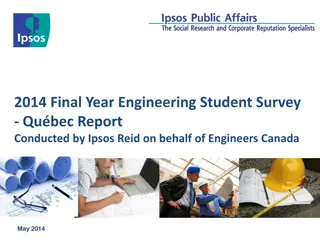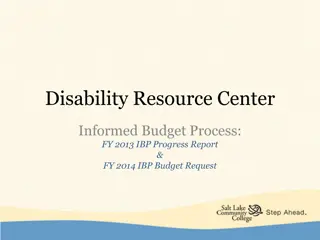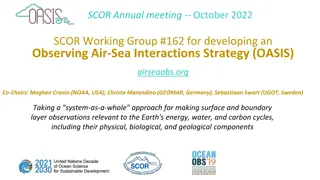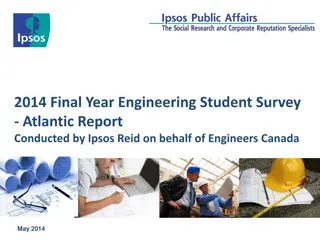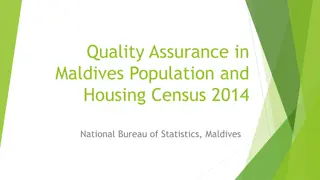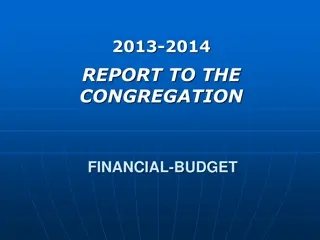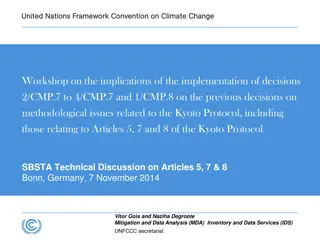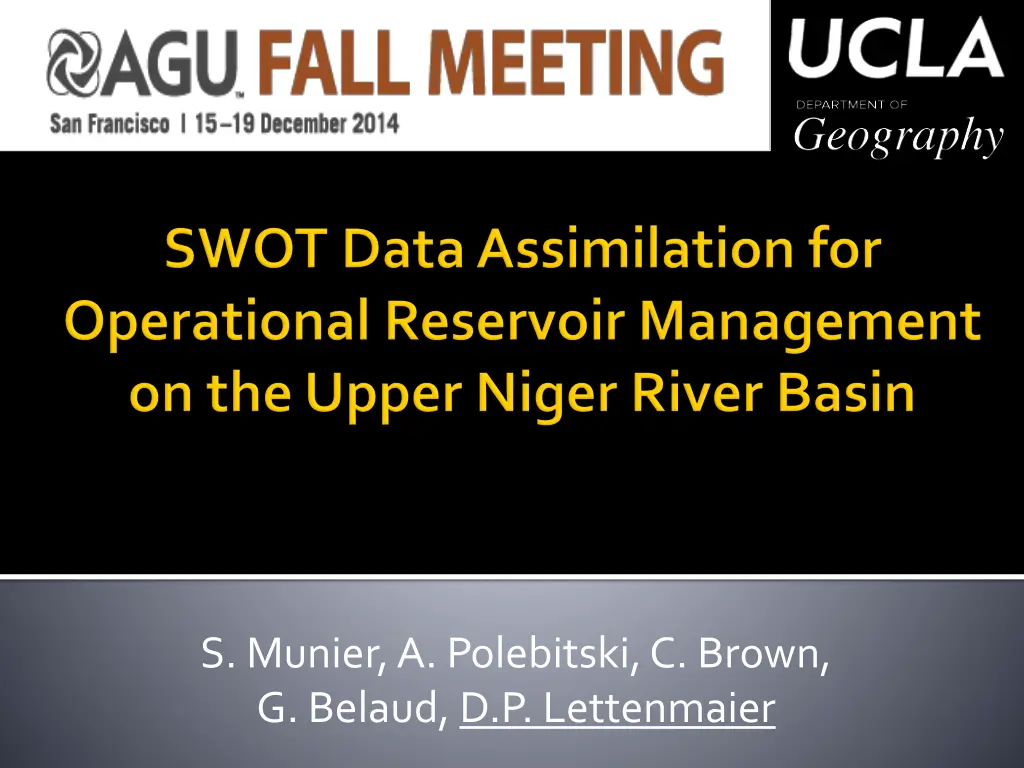
SWOT Satellite Mission for Water Resources Management
Explore the SWOT satellite mission aiming to inventory and monitor terrestrial surface water bodies globally for effective water resource management. Learn about the integration of SWOT data into operational systems and its impact on managing water resources in real-time.
Download Presentation

Please find below an Image/Link to download the presentation.
The content on the website is provided AS IS for your information and personal use only. It may not be sold, licensed, or shared on other websites without obtaining consent from the author. If you encounter any issues during the download, it is possible that the publisher has removed the file from their server.
You are allowed to download the files provided on this website for personal or commercial use, subject to the condition that they are used lawfully. All files are the property of their respective owners.
The content on the website is provided AS IS for your information and personal use only. It may not be sold, licensed, or shared on other websites without obtaining consent from the author.
E N D
Presentation Transcript
S. Munier, A. Polebitski, C. Brown, G. Belaud, D.P. Lettenmaier
Surface Water and Ocean Topography (SWOT) satellite mission SWOT will: Provide a global inventory of all terrestrial surface water bodies (lakes, reservoirs, wetlands) whose surface area exceeds ~ 6 ha, and rivers whose width exceeds 100 m Measure the storage change in resolved lakes, reservoirs, and wetlands, and the discharge of resolved rivers at subseasonalto annual time scales.
SWOT and water resources management Study case and methodology SWOT data assimilation Operational reservoir management
To maintain minimum streamflows at the outlet, reservoir managers have to: Predict the influence of difference factors Decide when and how much water has to be released from the reservoir Hydrology-Hydraulics-Reservoir modeling For definition of dam releases Depending on water demand, hydric state, available water in reservoirs Main limitations of current approaches Model approximations Quality of datasets (data sparse regions, discontinuities, quality control, uniformity, delay) Transboundary basins (data sharing) Use of remote sensing data: SWOT
The SWOT mission: Surface Water and Ocean Topography French/American mission, launch planned in 2020 2-D water elevation measurements over rivers (width: 100 m and more) 21 days repetitivity Accuracy on water elevation: 10 cm on a 1 km x 1 km square Questions: How to integrate information from SWOT data into operational water management systems? What are the performances of operational water management when only SWOT data are used in real time?
The upper Niger river basin Climate dominated by the Western African monsoon Large seasonal floodplains used for crop, livestock, fishing Selingue reservoir (2 x 109 m3) used for hydropower and low flow sustainability => Minimum streamflow requirement at Kirango (300 km downstream) Kirango considered reach
Meteo- rological forcings Hydrological inflows: VIC 0.5 degree resolution, daily time step Reservoir: water budget Hydrological inputs from VIC Min and max levels Dam release Hydrodynamics: LISFLOOD-FP Inputs from VIC and reservoir 1 km resolution, adaptive time step Evaporative losses Downstream discharge
First experiment: evaluation of SWOT data assimilation Corrupted forcings SWOT data assimilation (DA)
Second experiment: operational reservoir management Routing model
Ensemble members generation VIC meteorological forcings are corrupted Principal Component Analysis (decomposition into spatial and temporal modes) Each mode corrupted with white noise (0.2 std) 400 Precipitation (mm) 300 200 100 Spatiotemporal consistency maintained 0 J F M A M J J A S O N D Temperature Mean Temperature Range Wind Precipitation first spatial mode
Assimilation of SWOT water elevation SWOT observations over a complete cycle (21 days)
Assimilation of SWOT water elevation SWOT observations over a complete cycle (21 days) Number of SWOT observation
Effect of the assimilation on the downstream discharge (a) Open loop (b) Local Ensemble Kalman Filter (c) Local Ensemble Kalman Smoother (LEnKS) (d) LEnKS + Inflow Correction
Minimum flow requirement: 50 m3/s Need for water releases from the Selingue reservoir
Model Predictive Control Optimizes the releases to satisfy the downstream requirement Allows to account for the flow propagation (about 25 days) Use of a simplified routing model (lag-and-route) Initialization using the updated discharge in the river reach (after SWOT data assimilation) Model Predictive Control
target discharge Munieret al. (2014)
Conclusions Modeling framework adapted to SWOT data assimilation and operational water management Assimilation persistency high enough to overcome delays between SWOT measurements Perspectives Niger Inner Delta (complex hydrodynamic and data sparse region with high flood extent variations) Multiple reservoir control (MPC well adapted) Multiple reservoir objectives (e.g., hydropower) Data latency and SWOT errors issues over smaller basins






